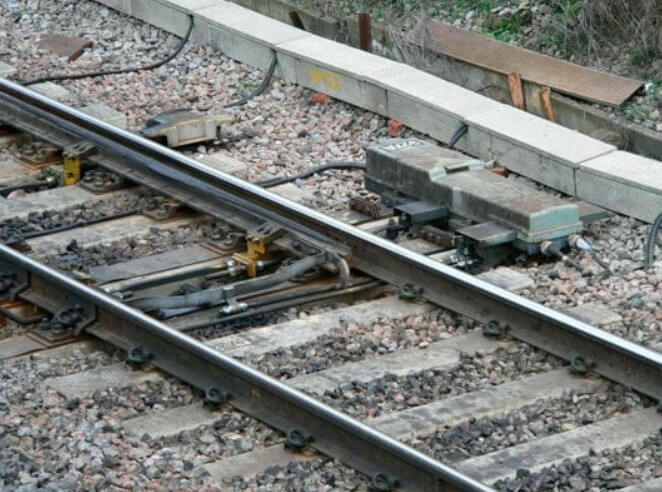Electrical faults are disturbances within a power system network that result in improper system voltages and current flows. Electrical faults can cause severe economic losses, equipment damage, fires, and personnel injuries. Therefore, it is important to detect, isolate, and clear electrical faults as quickly and accurately as possible to improve the reliability and safety of electrical systems. In this article, we will explore the latest methods for fault detection that can be used to identify the type and location of electrical faults in medium voltage systems. We will also discuss how these methods can help reduce the downtime and maintenance costs of electrical systems.

GET IN TOUCH
The ultimate solution for reliable power control! call us at 276-285-3841
What Is An Electrical Fault?
An electrical fault is an abnormal condition within a power distribution system that causes the current to deviate from its normal path. A fault can occur due to various reasons, such as aging, wear, and corrosion, or external factors, such as lightning, vandalism, or accidents. A fault can affect one or more phases of the system and can involve the ground or not.
There are four major types of electrical faults that can be classified based on the number of phases involved:
A Three-Phase Bolted
A fault is when all three-phase conductors come in contact with no impedance between them. A three-phase bolted fault is the least common fault type but usually produces the highest fault currents.
A Phase-To-Phase Fault
Bolted line-to-line fault is a fault that occurs with zero impedance between two phases. Its fault current magnitude is approximately 87% of a three-phase bolted fault.
A Phase-To-Phase-To-Ground
fault involves two phases and ground. Its fault current magnitude is approximately 58% of a three-phase bolted fault.
A Single-Line-To-Ground
fault involves an individual phase and ground. A single-line-to-ground fault is the most frequently occurring type of fault. Its fault current magnitude is approximately 40% of a three-phase bolted fault.
Electrical faults can occur in various locations within a power distribution system. This can include switching devices, manholes, handholes, pull-boxes, splices, or cable terminations. Electrical faults at these locations must be cleared as quickly as possible to eliminate hazards to personnel and limit the damage to equipment. Once the fault is cleared, isolated, and repaired, the electrical system needs to be restored as quickly as possible to ensure the continuity of plant service and minimize economic losses.

GET IN TOUCH
The ultimate solution for reliable power control! call us at 276-285-3841
How Are Electrical Faults Detected And Cleared?
Traditionally, an electrical fault in a medium voltage system is sensed by a protective relay. A protective relay is a device that monitors the electrical parameters of the system, such as voltage, current, frequency, and power, and compares them with predefined settings. Depending on the magnitude and duration of the fault, the relay issues a signal to its corresponding circuit breaker to trip after a predetermined amount of time. The relay then asserts a flag to denote that a trip condition has occurred. Once the relay trips the breaker and clears the fault, it is then up to qualified electrical personnel to determine the location and cause of the fault in order to perform maintenance activities to correct it.
Older protective relays cannot diagnose the fault condition, while newer relays can distinguish between fault types and even locate the fault. To understand how the type of fault can be determined, an understanding of symmetrical components is required. Symmetrical components are a mathematical tool that can decompose any fault into three balanced components: positive sequence, negative sequence, and zero sequence. A positive sequence component represents the normal operating condition of the system, where the three phases have equal magnitude and are 120 degrees apart.
A negative sequence component represents a phase reversal condition, where the three phases have equal magnitude but are 120 degrees apart in the opposite direction. A zero sequence component represents a phase imbalance condition, where the three phases have equal magnitude but are in phase with each other.
By measuring and analyzing the positive, negative, and zero sequence components, a modern protective relay can determine the type of fault. For example, a bolted three-phase fault consists entirely of the positive sequence component, a phase-to-phase fault contains positive and negative sequence components, and a single or double phase-to-ground fault contains all three sequence components.
A modern protective relay can also locate the fault by using various methods, such as impedance-based methods, traveling wave methods, or communication-based methods. Impedance-based methods use the voltage and current measurements at one or more points of the system to calculate the impedance of the faulted section and estimate the distance to the fault. Traveling wave methods use high-frequency transient signals that propagate along the power lines when a fault occurs to determine the time of arrival and the direction of the fault.

GET IN TOUCH
The ultimate solution for reliable power control! call us at 276-285-3841
Contact Us Today!
Suppose you need assistance with identifying faults and need equipment to diagnose the problem. Contact Swartz Engineering today.
Our Expert Services
Swartz Engineering provides top-quality products to meet our customers' needs. We also make sure our products work reliably and safely. Our products include:
- Type 76 DC Relay
- Type 82 DC Relay
- Swartz Engineering’s Type 64 Ground Relay
- Type 32 Reverse Current Relay
- Type 150 DC
- CSM Shield Monitor
- Metal Oxide Surge Arrestors
- Transducers
- MVIS SL Slim-line Contactor
- Fully-tested Power Control Rooms
- Swartz Engineering’s Portable Substations
